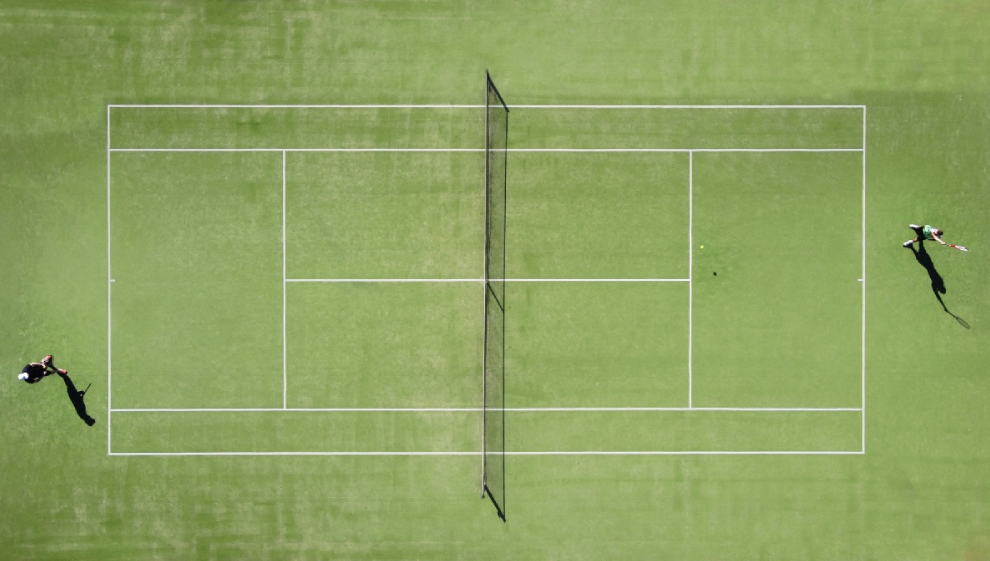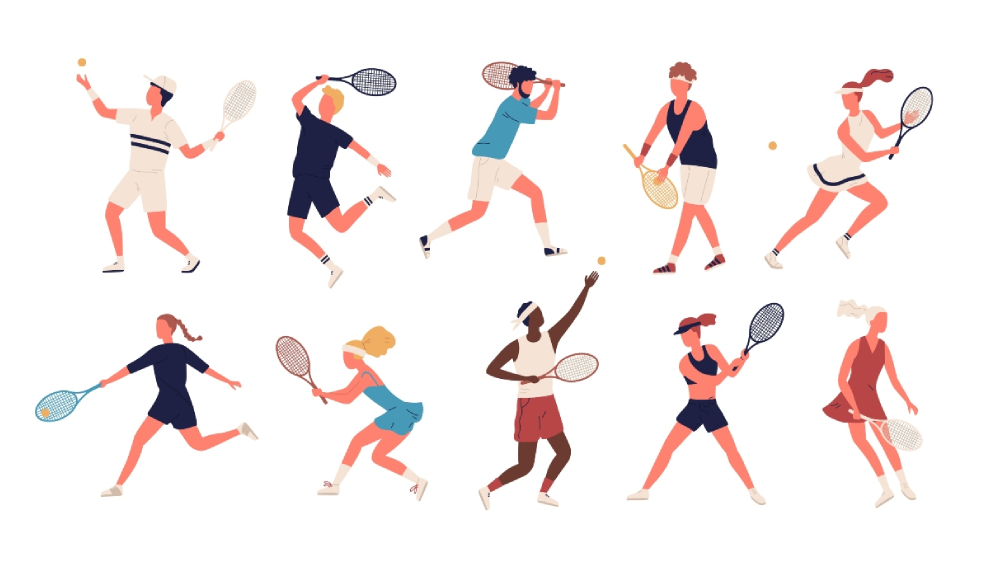Getting into tennis | A beginners guide to all things tennis
- Overview

The great thing about tennis is that you can take up tennis at any age.
In fact, tennis is one of the best sports for older adults and children to play together because it’s easy to pick up and has a high ceiling for more competitive players.
With the popularity of tennis at an all-time high, we’re here to share our expert tips for getting into the game and making the most of your time on the court.
Key takeaways
- There are over 10,000 free to play tennis courts in the United Kingdom
- Tennis has something for everyone, of all ages and abilities
- All you need to get started is an opponent, a racket, somewhere to play, and a set of balls
- You can play on grass, clay or hardcourt depending on your preference
- Seeking the help of a coach is a great way to get to grips with fundamental techniques
- Tennis is a fun sport that’s great for your cardiovascular health.
What do I need to start playing tennis?
All you really need to start playing tennis is an opponent, somewhere to play, a racket each and a ball. Depending on your experience and ability, you can take it as easy as you like. You may want to dive right into a game, set, or match, in which case it’s good to have a few more balls to hand.
As is the case with most sports, you can spend as much or as little as you want on a racket. We recommend finding a price point that works for you and getting a model with good reviews.
Tennis elbow got you down? Click here to learn more about injury recovery
What should I wear to play tennis?
If you’re playing tennis at the park for the first time, wear loose shorts and a sports top that’s made using a flexible moisture-wicking fabric if you can. This style of material helps when you start sweating. You can purchase specialist shoes for playing tennis, however a pair of good-quality running shoes are perfect for beginners moving around the court.
If you’re playing at a club or a more prestigious venue for the first time, it’s worth researching whether or not they have a dress code requirement ahead of time.
Types of tennis shots
Also referred to as strokes, your shots are what you’ll use out on the court. Watching and mimicking the fundamental techniques that professional players have spent thousands of hours honing goes a long way to improving your own game. To help you with this, we’ve partnered with ATP Tour professional Paul Jubb.
- Looking to improve your game? Click here for expert advice
How do I improve my tennis game?

Everyone knows that practice makes perfect. If you’re wondering how to best progress on the court, we’ve got you covered.
Mastering the basics and understanding the core positional and functional principles at the centre of the game is important.
You can get this from working closely with a coach, or from playing or talking to someone with a lot of experience in the game.
Improvement is all about consistency. Lots of people pick up tennis for a few months in the summer and don’t play again until a year later. To really improve, you need to be playing regularly. During the winter, consider searching for an indoor court nearby if you’re serious about keeping your game consistent.
What are the health benefits of playing tennis?
Tennis is one of the best sports out there for your cardiovascular health. Moving around the court point after point is great for heart health and maintaining flexibility as we age. The unique movements involved with serving and playing a wide range of shots are great for joint health and encouraging muscle development.
Tennis is also a great way to socialise. Playing against a friend or organising a doubles match with two others in summer is a great way to stay active and healthy whilst enjoying some competitive fun in the sun.
What else makes tennis great?
- Tennis can be played by children and older adults alike
- Free courts up and down the country reduce costs and maximise affordability
- The fast pace makes for a great muscular and cardiovascular workout
- The shoulder rotation and movement are great for minimising joint pain
- Unlike other seasonal grass sports, hardcourts allow you to play tennis all year round
- There are ultra-accessible variations for those with mobility issues
- The sport has a competitive edge for those with a higher skill ceiling
- You don’t need to spend time juggling schedules to get a team together
Never neglect your warmup
Tennis is a stop/start game that demands a lot from your body. No matter what level you’re playing at, you need to ease into a match to prevent sudden injury. Lunges, turns and short and sharp sprints can wreak havoc on your joints, muscles, and tendons if you don’t warm up correctly.
Warming up looks different for everyone. Prioritise keeping warm and stretching out core areas (shoulders, hamstrings, back and knees) that are prone to tightness.
I’ve picked up an injury
Tennis is a fast-paced game that can easily result in injury if we’re not careful. If you’ve hurt yourself playing and aren’t sure about recovery and rehabilitation, meeting with a physiotherapist can help you get back to your best quickly.
Learning the rules of tennis
The rules of tennis are simple. If you want to enjoy a competitive match with your opponent, it’s important you know them. There are, as is the case with most sports, also a lot of niche rules that you’ll pick up along the way.
The idea of the game is to hit the ball over the net whilst keeping it inside the lines marked on the court. The wider lines mark the “doubles” court when you’re playing with four people, and the interior tramlines mark out a “singles” court.
If you hit the net or the ball lands outside these lines, your opponent receives a point. The points system is a little technical, so it’s worth doing some research if you’re interested in scoring a proper game, set and match.
Finding a court to play on
The British Heart Foundation estimates that there are over 10,000 free tennis courts in the UK. If there’s a park local to you that has free-to-play courts, it’s worth making the most of these. There are several online tools and applications available for finding local courts. Simply input your postcode or address and the app will provide you with a list of courts nearby.
A range of our health and wellbeing centres have indoor and outdoor tennis courts available on site. Available for booking if you’re a member, they grant access to premium facilities that bring out the best in your game.
Are there different types of tennis courts?
Tennis can traditionally be played on one of four surfaces. For beginners playing down the park, your local court will likely be a combination of concrete and gravel. Known as “hard courts”, this surface is fine for starting out and compliments beginners well.
There are three four main surfaces the game is played on at a higher level, which are grass, clay, and artificial grass (or carpet).
If you suffer with joint pain or mobility issues, paying to play on a grass court can alleviate the pressure and tension on your joints as the turf provides cushioning underfoot.
Am I too old to play tennis?
It’s never too late to start playing tennis. Whether you’re 25 or 75, tennis has something for everyone. Provided you can hit a ball, you can enjoy the game even if you lack the mobility to quickly move around the court. Walking versions and slower pace variations of the game have even been developed to get more older adults into tennis.
Last updated Tuesday 10 October 2023
First published on Tuesday 30 June 2015
